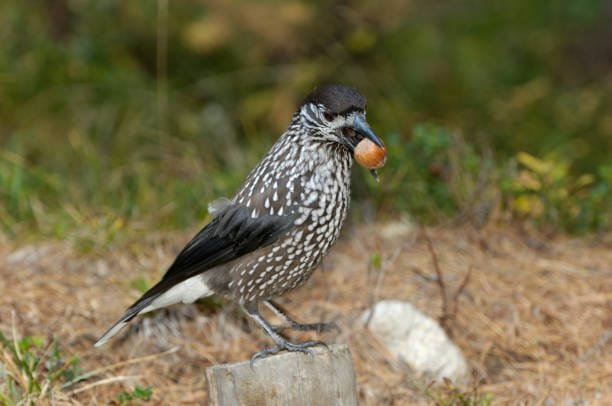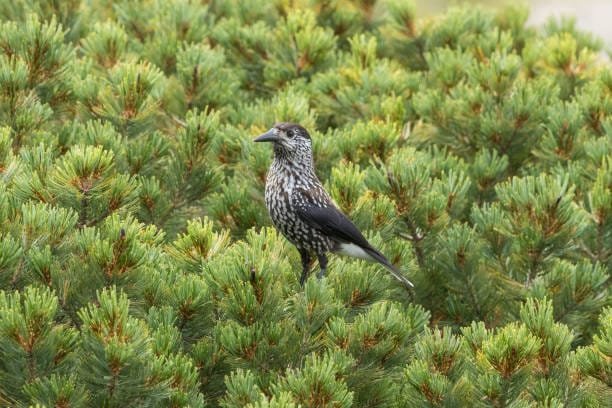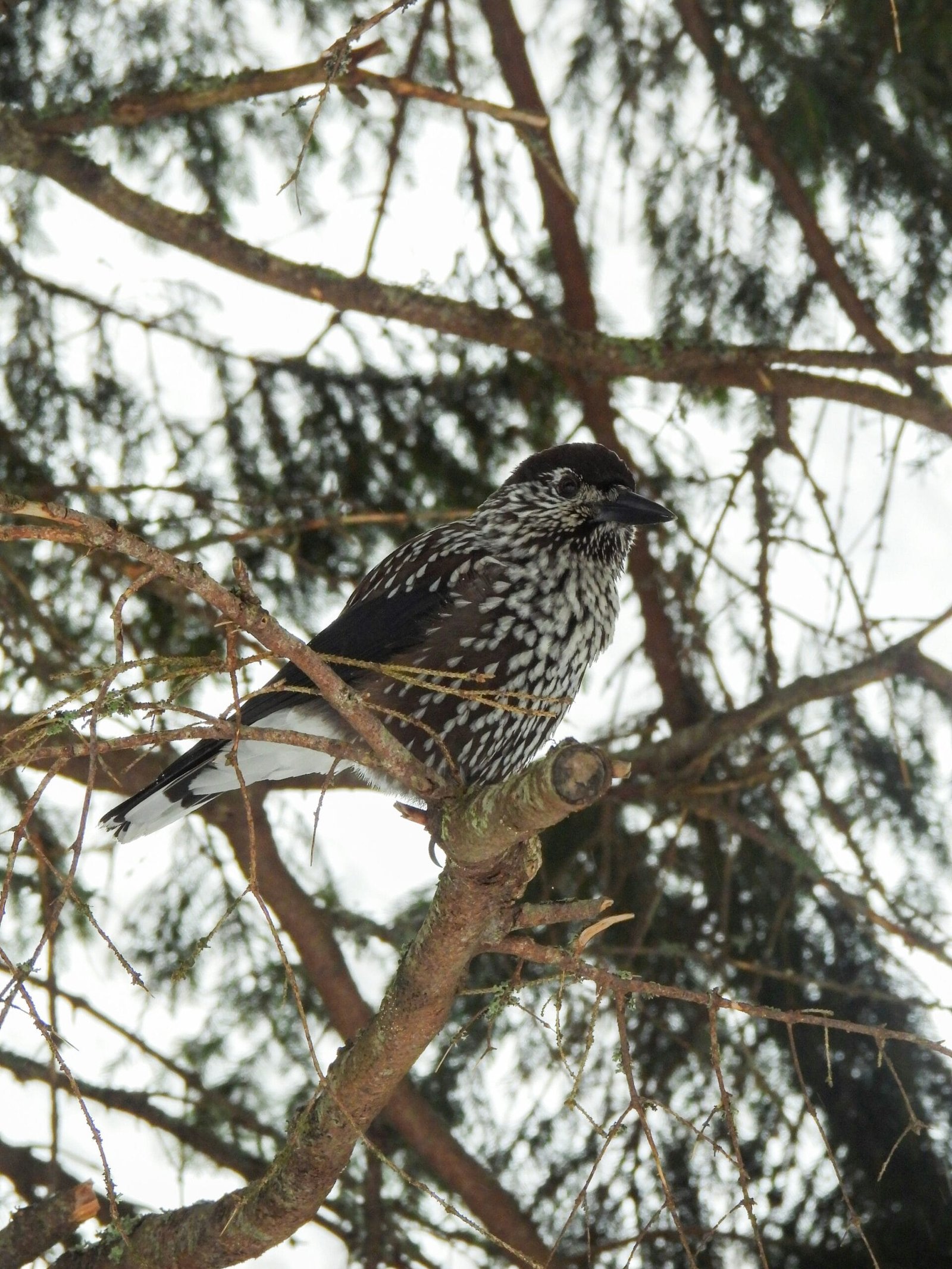Introduction to the Nutcracker Bird
The nutcracker bird, scientifically known as Nucifraga, is a remarkable avian species native to the coniferous forests of North America. Belonging to the family Corvidae, which includes crows and jays, the nutcracker exhibits several distinctive characteristics that make it stand out in the avian community. With its robust body, sturdy bill, and striking plumage, the nutcracker is well-equipped for its habitat and feeding habits. Adult nutcrackers typically measure around 12 to 15 inches in length, exhibiting a predominantly brown or grayish coat accented by black and white markings. Their signature feature, a strong, slightly curved bill, enables them to effectively extract seeds from cones, which forms a major part of their diet.
Nutcracker birds have evolved unique behaviors that further define their identity. These birds are well-known for their caching behavior; they collect and store seeds in various locations for later consumption, showcasing an impressive ability to remember the location of their food caches. This behavior not only aids in their survival during harsh winters but also plays a crucial role in forest regeneration, as buried seeds can germinate and grow into new trees. Their social structures also display interesting dynamics, as nutcrackers are often seen in small groups, particularly during feeding opportunities.
The nutcracker’s habitat primarily consists of boreal and montane forests, where it thrives among the conifers. Its distribution across North America reflects its adaptability to diverse climates found in this region. Historically, the name “nutcracker” originates from the bird’s notable feeding technique, likening its bill to a tool used to crack open nuts. This, combined with the bird’s intriguing behavior, has led to cultural associations ranging from folklore to popular art. As such, the nutcracker bird is not only an architect of its forest ecosystem but also a significant figure in the cultural tapestry surrounding avian life in North America.
Snooper Trees: The Nutcracker’s Ingenious Creation
The nutcracker bird, an avian marvel found in the northern regions, has a remarkable impact on its environment, particularly through the phenomenon known as ‘Snooper trees.’ This term describes the distinctive trees that exhibit peculiar shapes and growth patterns as a direct result of nutcracker behavior. Primarily, these birds engage in a foraging strategy that involves caching seeds, particularly those of coniferous trees, which are essential for their winter survival. As the nutcracker stores these seeds in the ground, some are forgotten or left uneaten, leading to germination and the development of seedlings in close proximity to their parental trees.

Interestingly, the nutcracker’s method of caching does not merely aid in their own sustenance; it plays a crucial role in influencing the forest structure and composition. As seeds sprout and develop, the resultant Snooper trees display variations in height and density compared to their non-influenced counterparts, showcasing the nutcracker’s role as a natural architect. This behavior facilitates a tapestry of growth that may enhance habitat diversity within the forest, positively influencing other species that rely on these unique structures for shelter and food.
Moreover, Snooper trees contribute significantly to the local ecosystem by fostering biodiversity. The trees often create microhabitats which foster various forms of wildlife, offering nesting sites and food sources that benefit numerous species. As they grow, these trees become integral to the food web, supporting insects, birds, and mammals that thrive in such niches. The nutcracker, through its simple yet impactful actions, underscores the interconnectedness of species and the profound implications of one bird’s behavioral adaptations on forest ecology. Therefore, understanding the nutcracker’s influence is essential for appreciating the intricate balance within northern ecosystems.
Ecological Role of the Nutcracker Bird
The nutcracker bird, known for its remarkable adaptations, plays a pivotal role in the health and sustainability of forest ecosystems. Primarily, it serves as a vital agent of seed dispersal, particularly for coniferous trees such as the whitebark pine and other species of Snooper trees. When nutcrackers consume the seeds from these trees, they do not eat all of them at once; instead, they often stash away excess seeds in various locations for future use. This behavior is crucial, as it inadvertently leads to the propagation of the trees, resulting in a natural recycling of nutrients and promoting forest regeneration.
The relationship between the nutcracker bird and the Snooper trees is one characterized by mutualism. As the nutcracker facilitates seed dispersal, the trees benefit by expanding their range and ensuring species continuity. The nutcracker’s efficient foraging habits result in a higher likelihood of seed germination, as some seeds are buried in nutrient-rich soil and away from competitive vegetation. Consequently, the health of these forest ecosystems is enhanced, contributing to increased biodiversity and stability.
Moreover, the nutcracker’s ability to adapt to different habitats underscores its significance in various ecosystems. This bird not only aids in the regeneration of forests but also helps maintain the structural complexity of these environments. As the nutcracker interacts with various plant species and their seeds, it indirectly supports a range of other organisms, further emphasizing the interconnectedness of life within the forest. In conclusion, the nutcracker bird is not merely an inhabitant of the northern forests; it is, in fact, an architect of ecological balance and diversity, showcasing the intricate relationships that support healthy ecosystems.
Conservation and the Future of the Nutcracker Bird
The nutcracker bird, recognized for its remarkable adaptability and ecological role, is currently facing significant threats due to habitat loss, climate change, and human activities. As forests are cleared for agriculture, urban development, and logging, the vital habitats of these birds are being diminished. This reduction in area not only impacts the nutcracker’s breeding and feeding grounds but also affects the overall biodiversity of the ecosystems they inhabit.
Climate change poses an additional challenge, altering the availability of food resources, particularly the conifer seeds that the nutcracker bird heavily relies on. Fluctuating temperatures and unpredictable weather patterns can disrupt their breeding cycles and migration, further exacerbating their vulnerability. Furthermore, human encroachment changes the landscape, potentially introducing new predators and competition, which can be detrimental to the nutcracker populations.

In response to these pressing challenges, numerous conservation efforts are underway aimed at the protection of the nutcracker bird and its habitat. Organizations focused on avian conservation are working to establish protected areas and promote sustainable land-use practices. These initiatives not only benefit the nutcracker bird but also safeguard the integrity of entire ecosystems. Educational programs are also being developed to raise awareness about the importance of the nutcracker bird and the ecological roles it plays, particularly in seed dispersal and forest regeneration.
Community engagement is crucial in these conservation efforts. Local initiatives that encourage habitat restoration, wildlife-friendly practices, and participation in bird monitoring can help bolster nutcracker populations. By becoming involved, individuals can contribute to a collective effort that emphasizes the importance of conserving this unique bird species and the habitats it requires for survival. Ultimately, fostering a deeper understanding of the nutcracker bird will be essential in ensuring its future as an integral architect of northern ecosystems.


